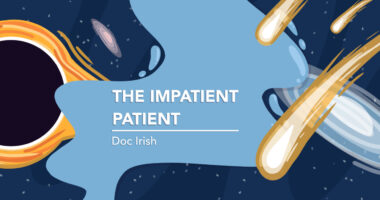Heightening patients’ contributions to Parkinson’s research
While waiting for treatment breakthroughs, how can we move things along?

I became extremely frustrated with the whole treatment and research system when I was denied access to the Parkinson’s disease clinical trial I wanted to participate in. That prompted many questions: Why does research take so long? Where does all the fundraising money go? Why do I feel so far from the loop regarding meaningful research and development?
I understand the need for safety, and I also understand the research world. I’ve reviewed grants for multiple committees, including the Parkinson’s Research Program, part of the Department of Defense’s Congressionally Directed Medical Research Programs. And on behalf of the Michael J. Fox Foundation for Parkinson’s Research, I served on a Parkinson’s Policy Forum event at Capitol Hill. I’ve also been designated a research advocate with a couple of organizations.
As a patient, however, I felt like I was on the outside looking in. I knew that, somehow, changes needed to be made. How can we patients become more central to the process and gain some control?
A patient’s perspective
As someone with Parkinson’s, I have an entirely different perspective from someone without it. My patient experience yields a level of understanding that isn’t possible otherwise. Naturally, that applies to many aspects of life: brain-body dynamics, urgency, risk tolerance, and belief updating, among others. Patients’ wisdom should be leveraged to improve research whenever possible.
I needed to make a real difference. So instead of complaining about the system, I chose another approach after a lot of personal research and many meetings with principal investigators. I started developing a team and my own solution. I realize it’s against all odds to have success with such a venture; I feel like a card counter at the blackjack table. But I’m also gaining a weird confidence as we build it. The more I learn, the more I believe it’ll work.
Here is my nonscientist, way oversimplified view as a patient:
Despite promising research, the two primary options to treat Parkinson’s symptoms are still levodopa with carbidopa and deep brain stimulation (DBS). Unfortunately, options through genetic studies and its new-drug development have yet to make their mark with patients. That drug pipeline is expensive and long. Who knows when a breakthrough will happen?
On the other hand, DBS offers real, short-term opportunities, in my view. How can we accelerate advances in DBS?
Fundamentally, I see DBS as simply an implanted pulse generator. I view other forms of traditional brain stimulation (e.g., transcranial magnetic stimulation, transcranial direct current stimulation, and focused ultrasound) the same way — as different methods of delivering pulsed information to the brain.
One significant difference among them that I see is the way the pulsed signals are delivered to the brain. DBS requires an invasive procedure to implant the device, whereas the other methods are applied externally. The scariest thing to me, as a patient considering the prospects of deep brain stimulation, is what seems to be a general lack of precision. How exactly do these forces change my brain? To me, the actual mechanism of action seems poorly understood in all cases.
An interesting complementary method is to stimulate brain patterns naturally. How can we use our sensory-signaling pathways to this end? What’s the best way to interface with brain-body connections? How can we improve patient involvement? Vibratory tactile stimulation to the fingertips is one example of sensory input; many similar options exist, with their own considerations.
I plan to explore many of these options in upcoming columns.
Note: Parkinson’s News Today is strictly a news and information website about the disease. It does not provide medical advice, diagnosis, or treatment. This content is not intended to be a substitute for professional medical advice, diagnosis, or treatment. Always seek the advice of your physician or another qualified health provider with any questions you may have regarding a medical condition. Never disregard professional medical advice or delay in seeking it because of something you have read on this website. The opinions expressed in this column are not those of Parkinson’s News Today or its parent company, Bionews, and are intended to spark discussion about issues pertaining to Parkinson’s disease.








NIcholas Coldrick
Very interesting, I share your frustrations and look forward to your upcoming columns!
John Crouse, Jr
As a PD patient, my perspective is somewhat different than that of the scientific community. I am aware of a company that has a drug that has gone through Phase 2 testing and has been proven safe and that is also effective in diminishing motor symptoms and cognitive issues. It is now undergoing Phase 3 testing to determine WHY it works. This will effectively delay clinical use of the drug for at least 2 years (assuming there continue to be positive results). With all due respect to the scientists, I DO NOT CARE why it works-----only that it does work (even a little bit). Let me have it NOW. I'll sign a release if necessary but to continue to withhold the drug is almost criminal.
mike
AMEN, John!!!
Bill Fleming
Read your article re PD. I was diagnosed in 2017 and had DBS in 2018.
In US, there are 3 equip manf for the pulse generator and battery. I’ve never read an article re comparison of these.
Doc Irish
Hi Bill, thanks for the note. I've found the same thing - it seems impossible to do a good comparison of these options.
Doc Irish
Nicholas, thank you. We need to keep grinding.